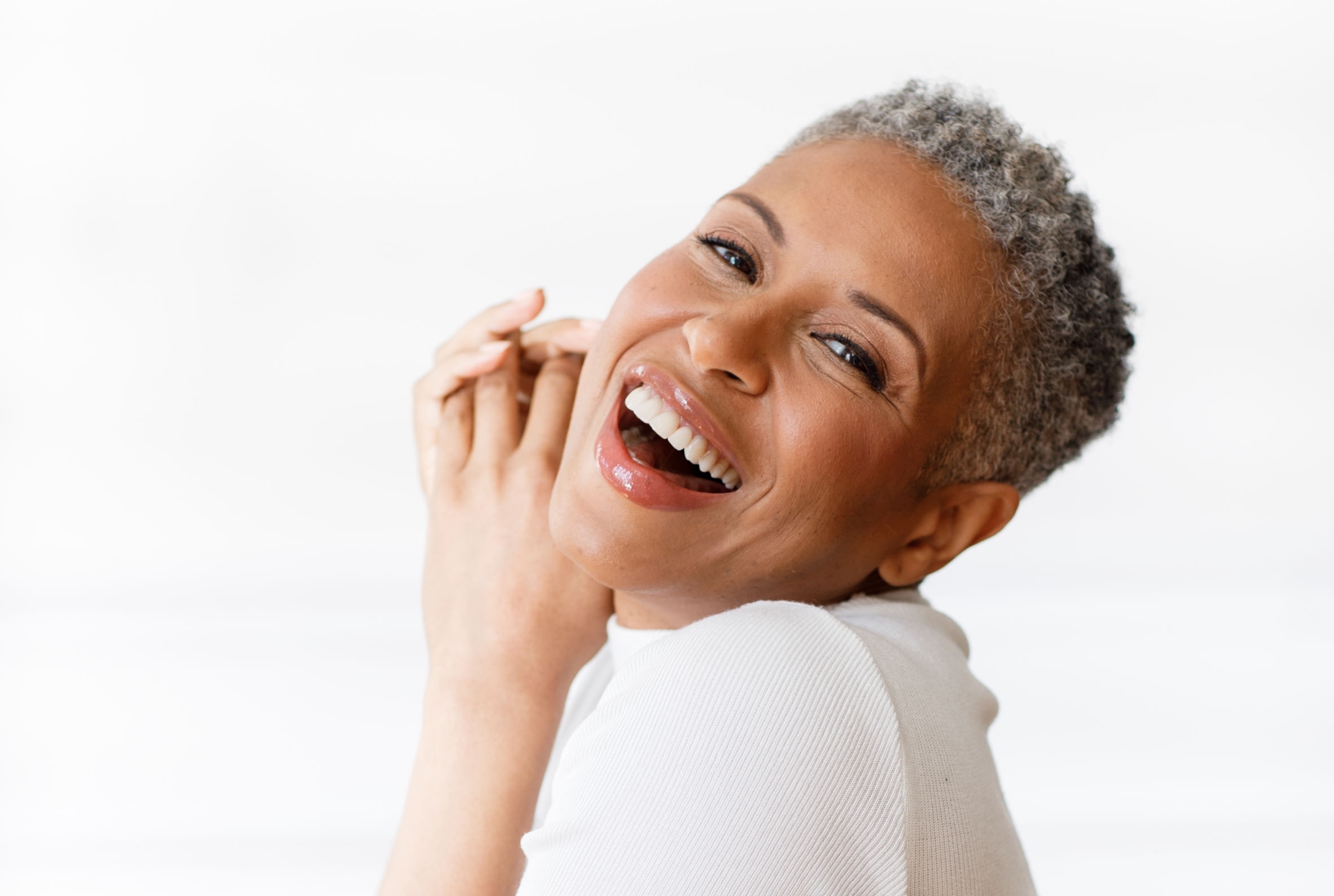THINNING HAIR DEFINITION
You may notice changes to your hair take several different forms during menopause. Hair may become generally thinner, or you may notice a number of other changes including a receding hairline, bald patches or changes to the quality of your hair. It may feel drier or more breakable.
You may also hear this called female pattern hair loss or female androgenetic alopecia.
There are many other types of hair thinning which are not necessarily related to age or menopause – your doctor will be able to advise on which is affecting you.
Start your free online menopause assessment to see if HRT is right for you

HOW LIKELY IS THINNING HAIR DURING MENOPAUSE?
Very likely, although this is a problem for about 10% of people even before menopause.
As you get older, thinning becomes more common. By the time you reach 70 years of age, 56% reporting being affected.
Read more about the stages of menopause.
TIPS TO HELP WITH THINNING HAIR DURING MENOPAUSE
Check in with your doctor
Menopause is just one of many causes of thinning hair. Your doctor will be able to help you ensure there is no other problem causing this issue. For example, thinning hair often goes hand-in-hand with anaemia and thyroid conditions, both of which are treatable. Your doctor may also advise seeing a dermatologist if they think other treatments may help.
Take a look at your medications
If hair changes are affecting you, ask your doctor for a medication review. Some medicines can lead to hair changes including thinning. Your doctor will be able to help you to weigh up the risks and benefits of each for your personal circumstances.
Eat a balanced diet
A healthy diet with plenty of nutrient-rich foods is essential for hair growth.
Think about minoxidil
This medication is applied directly to the scalp, and comes as either a liquid or foam. Some products are available without a prescription, but it is worth checking in with your doctor before starting to ensure that this is the right option for you. If it is, you can expect to see results after three-to-six months of use. You will need to continue using minoxidil long-term to see continued effects.
Have a heart-to-heart with your hairdresser
They may be able to recommend certain cosmetic options to help disguise the thinning. These include dyes, styling, and hair products. Extensions are sometimes used, but be aware that these may cause further damage to the hair due to the way they pull at the follicle.
Hairpieces might help
Consider trying a wig or hairpiece if it would boost your confidence. These are widely used and you can find almost every style imaginable, from super-natural to completely outrageous! Alopecia UK has a helpful guide on getting started.
Consider hair transplant
If less invasive treatments haven’t worked for you, you may want to think about a hair transplant. This surgical procedure involves transplanting hair follicles from areas of the scalp with thicker hair to those where you see thinning. This is only available privately at present.
Keep an eye on your mental health
Hair loss can have a big impact on your self-esteem, mood and sex life. If you have any concerns, speak to your doctor.
CAN HORMONE REPLACEMENT THERAPY (HRT) HELP?
Possibly. Some women notice an improvement in their hair after starting HRT, however there is not yet any scientific evidence that HRT reverses menopausal hair thinning.
For this reason, HRT is not typically prescribed for thinning hair alone. This is because of the way the risks of HRT are weighed against its benefits.
HRT can effectively treat many other symptoms associated with menopause, such as hot flushes, mood changes, and sleep disturbance, among others. Read more on the risks and benefits of HRT here.
HRT can also effectively treat many other symptoms associated with menopause, such as hot flushes, mood changes, and sleep disturbance, among others. Read more on the risks and benefits of HRT here.
HRT is not suitable for everyone. Speak to your doctor if you would like to find out more about the best treatment for you.






